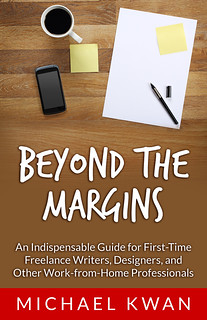“More than you can afford, pal. Ferrari.” Many of us are familiar with that iconic scene from the first The Fast and the Furious movie. And for most of us, that line will certainly ring true. I don’t know about you, but I most certainly cannot afford to buy a Ferrari. Instead, I drive a late model Nissan… which might be out of reach for some people. For me, the Ferrari is a pipe dream and the Nissan is my humble reality. And this is a demonstration, in some ways, of hedonic adaptation.
While I’m not unhappy driving that Nissan around town, it doesn’t exactly bring me a lot of joy either. Not really. It’s just my “normal.” But I still remember when we first swapped into this vehicle a few years ago. The heated leather seats, the Bluetooth connectivity, the integrated GPS, the backup camera… these were all new to me. Now, they’re normal and they represent a new baseline.
LCD Killed the CRT Star
I think we all fall victim to this sense of lifestyle inflation. What was once luxurious and exciting is now mundane and a minimum expectation. Another great example is television. When I was a kid, we had one of those monstrous TVs in a wooden cabinet. When we upgraded to a sleek 27-inch Sony Trinitron, I was thrilled. But soon, it was just okay. So we got a 32-incher a few years later.
Eventually, that was just fine too. My brother got a 50-inch LCD rear projection TV, the first time our family evolved beyond the CRT. I was astonished not only by how large it was (even though it only did 720p/1080i), but also how light it was for its size. These days, nothing short of a slick flat panel will do. Can you imagine going back to a 27-inch boob tube?
Chasing Happiness
As consumers, we’ve been trained to want more, faster, better. This car is serving the purpose it needs to serve, but I’d rather have a Lexus or an Acura. This TV is doing a perfectly fine job of displaying PAW Patrol, but I want a bigger one with a higher resolution and a curved screen. We feel like we’ll be happier with more. He who dies with the most stuff wins, right?
Here’s the thing. And I think we all recognize this on some intuitive level, even if we never express it outright. Pure hedonism is self-defeating. Simply chasing happiness isn’t enough, as it will just leave you in a rather unhappy position. Rampant consumerism leads to insurmountable debt.
But we all want to be happy. So, we keep doing the things that we think will make us happy, only to lull ourselves into the complacency of the new normal. What was once exciting and new and rewarding is ordinary and routine. It’s because of hedonic adaptation that we’re never really satisfied and we’re constantly yearning for me. It’s because of hedonic adaptation that we forget to be grateful for what we do have.
Start at the End
Studies have shown that whether we’re talking about cars, televisions or anything else, there is no lasting gain in happiness with almost anything that we do (or buy). We all get stuck in this “I’ll be happy when” line of thinking, only to realize that the happiness gleaned from a new toy is awfully fleeting.
In this way, we all need to shift our perspective on the matter. Happiness is not some sort of final destination. It’s not like you can accumulate this or that, and then you’ll “arrive” and stay happy forever. Instead, happiness is more akin to a journey or a manner of being. It’s how you choose to approach the world rather than what you get from the world.
Start with contentment. Be content with enough. Let happiness be the way, rather than the objective.





Trackbacks/Pingbacks